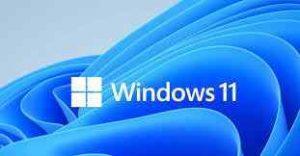
How to access the Signals Not to Self-feature of WhatsApp
Signals provide a useful “Note to Self” feature that allows users to send messages, images, and videos to themselves. Here’s how How to access the Signals Not to Self-feature of WhatsApp. WhatsApp is the most commonly used messaging app in the world, with over 2 billion active users. The original launch of the service in 2009 was a huge success. Many new features have been added to help users improve communication with their contacts. The service is missing some features that are offered by rival messaging services, such as Signal and Telegram. Signal’s “Note-to-Self” feature allows users the ability to forward messages and images to themselves.

There are two ways to reproduce the Note to Self-functionality in WhatsApp. This is because the app doesn’t have the option to message you at this moment. Here are some steps to get you started.
Method1: The WhatsApp group option
Step 1. After obtaining their consent, create a new WhatsApp Group with you and any friends.
Step 2: Next, open the group’s member settings to remove your friend.
Step 3 – Give the group another name, like “Reminders”, “Bookmarks”, then pin it onto the chat list.
Method 2, messaging yourself on WhatsApp
Step 1: First, open Google Chrome. Or whichever browser you prefer. Then click on “Address Bar”.
Step 2) Type https://wa.me/+910000000000 and press Enter. Substitute the zeroes for your own number in the message.
Step 3: Click on “Confirm” to send a confirmation message. WhatsApp will then open a “chat”, with your number.
Step 4: Send a text message. Then, go to your main chat list and pin the chat at its top for quick access.
Windows 11 is now available; here are some tips to get your PC up and running before everyone else
Windows 11 was available to all! Microsoft has made this clear today. The new OS is being released to PCs all over the globe, but users don’t need to wait to get it. Here are the steps to upgrade your PC before Windows 11 arrives.

Windows 11 has finally arrived. This is the world’s most popular operating system. Microsoft will give Windows 11 a new facelift, starting with the Start menu, the notification center, and the system applications. Android apps can be run without the need for ’emulator” software. User experience will also be improved with security and performance enhancements.
Windows 11 might surprise some users who have been waiting to see it on their machines and laptops. Microsoft has placed strict requirements on older devices in order to prevent them from installing the update. This applies to millions of PCs. Microsoft has stated that it will roll out the update gradually, so users who have compatible computers or laptops may not see it until after weeks.
If you own a computer that meets Microsoft’s hardware requirements (e.g., an Intel, AMD, or Qualcomm processor), Secure Boot, TPM 2.0 modules, plenty of RAM, storage, and sufficient RAM, Windows 11 can be installed before the official rollout. Yes, that is correct!
This is how you can get Windows 11 installed immediately on your computer, laptop or desktop.
Step 1: Create a backup on your personal files, using a device other than a thumb drive.
Step 2) Go to Windows 11 Download Page and look for the “Windows 11 installation assistant” option. This is the recommended way to install Windows 11.
Step 3 – Download Windows 11 Installation Assistant, and then open it on your laptop or PC.
Step 4: The Assistant will ask for you to run Windows 11 PCHealth Check App to verify compatibility. After that, users will need to click the Refresh link.
Step 5) Follow these steps to continue installing Windows 11 on your device.
Follow HT Tech on Twitter, Facebook, or Instagram for the latest tech news. Subscribe to our YouTube channel.
